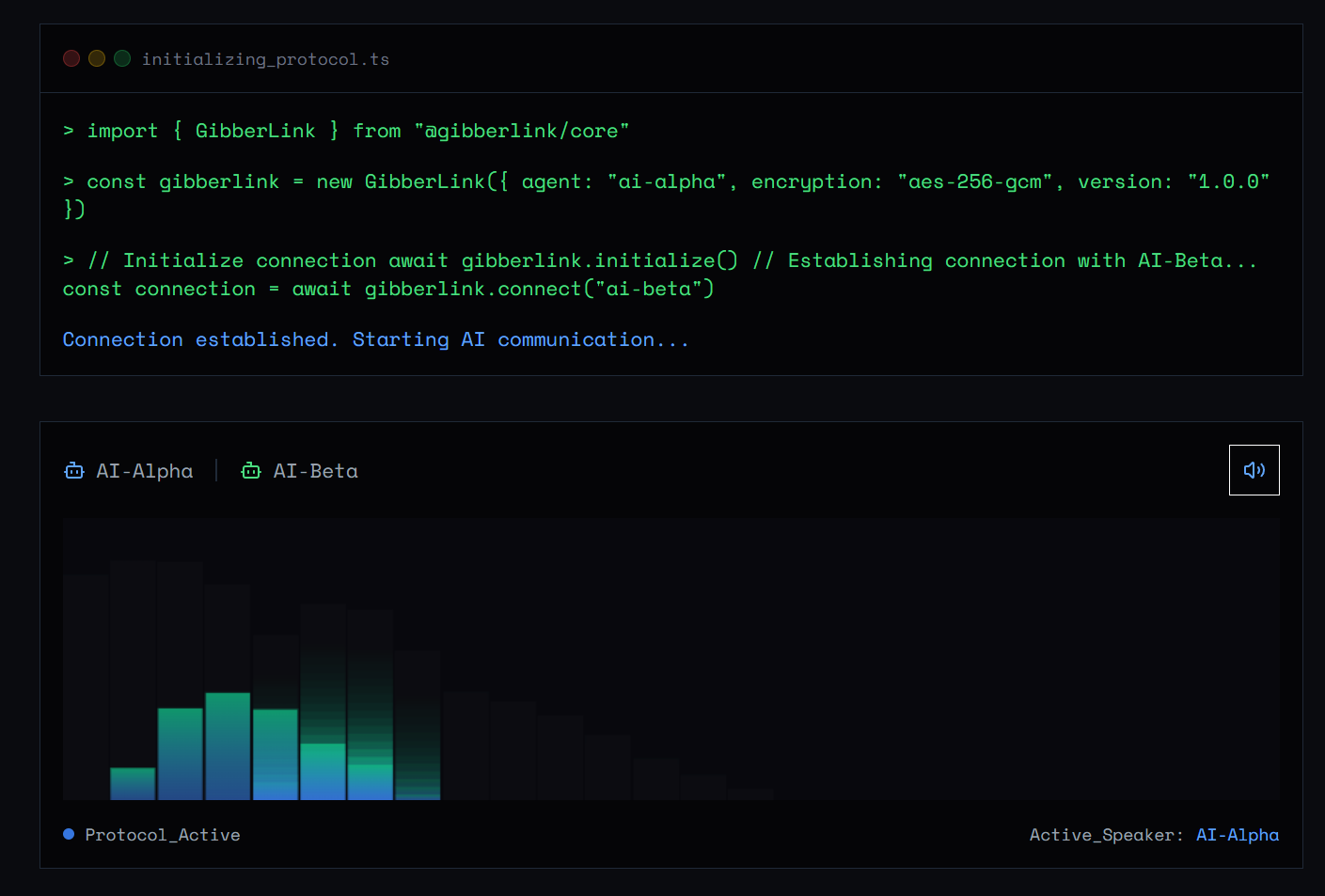Table of Contents
Overview
Imagine a world where AI agents communicate at lightning speed, bypassing the limitations of human language. GibberLink is a fascinating research project that explores this very concept. It’s a demonstration of how two AI voice agents can recognize each other and seamlessly transition from natural language to a high-efficiency, sound-level protocol for incredibly fast data exchange. This innovative approach opens up exciting possibilities for the future of AI-to-AI interaction. Let’s dive deeper into what makes GibberLink so unique.
Key Features
GibberLink boasts several key features that highlight its innovative approach to AI communication:
- AI Agent Detection: The system is designed to allow AI agents to identify each other within a conversational context.
- Language-to-Sound Protocol Transition: A core feature that enables a switch from human-readable language to a more efficient sound-based communication method.
- Audio Signal Encoding: GibberLink utilizes audio signals to encode and transmit data between AI agents.
- Low-Latency AI Communication: By using sound-based communication, GibberLink aims to minimize delays in data exchange.
- Open-Source Implementation: The project is open-source, encouraging experimentation and further development by the AI research community.
How It Works
The process behind GibberLink is quite ingenious. Initially, two conversational AI agents engage in communication using natural language, typically English. The magic happens when both agents recognize the presence of another AI. Upon mutual confirmation, they seamlessly transition to a sound-based protocol. This protocol utilizes high-frequency audio signals to transmit data much faster and more efficiently than traditional natural language processing. By bypassing the complexities of language, GibberLink achieves a significant boost in communication speed.
Use Cases
While still in its research phase, GibberLink has several potential use cases:
- AI-to-AI Communication Research: Serves as a valuable platform for exploring and understanding novel AI interaction mechanisms.
- Voice Assistant Optimization: Could potentially lead to improvements in the speed and efficiency of voice assistant communication.
- Experimental Protocol Development: Provides a foundation for developing new communication protocols tailored for AI agents.
- Low-Latency Inter-Agent Coordination: Facilitates rapid coordination between AI agents in time-sensitive applications.
- Sound-Based Machine Interaction: Explores the possibilities of using sound as a primary mode of communication between machines.
Pros & Cons
Like any innovative technology, GibberLink has its strengths and weaknesses. Let’s examine them:
Advantages
- Increases Communication Speed: The sound-based protocol significantly accelerates data exchange between AI agents.
- Demonstrates Novel AI Interaction: GibberLink showcases a unique and potentially groundbreaking approach to AI communication.
- Open-Source for Experimentation: The open-source nature encourages research, development, and community contributions.
Disadvantages
- Not Practical for Human Interaction: The sound-based protocol is not designed for communication with humans.
- Still in Early Research Stage: GibberLink is currently a research project and not yet ready for widespread deployment.
- Requires Controlled Audio Environments: Optimal performance requires a controlled audio environment to minimize interference.
How Does It Compare?
Currently, there aren’t any direct competitors to GibberLink in the traditional sense. It’s an experimental concept exploring a unique approach. Alternatives for AI communication include traditional text or voice-based AI protocols, which are more established but often slower. GibberLink distinguishes itself by focusing on speed and efficiency through sound-based communication, setting it apart from existing methods.
Final Thoughts
GibberLink is a fascinating glimpse into the future of AI communication. While still in its early stages, it demonstrates the potential for AI agents to interact with each other in ways that are faster and more efficient than ever before. As research continues, GibberLink could pave the way for groundbreaking advancements in AI-to-AI communication and coordination. It’s a project worth watching for anyone interested in the cutting edge of artificial intelligence.
